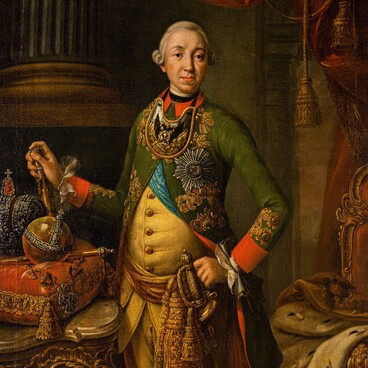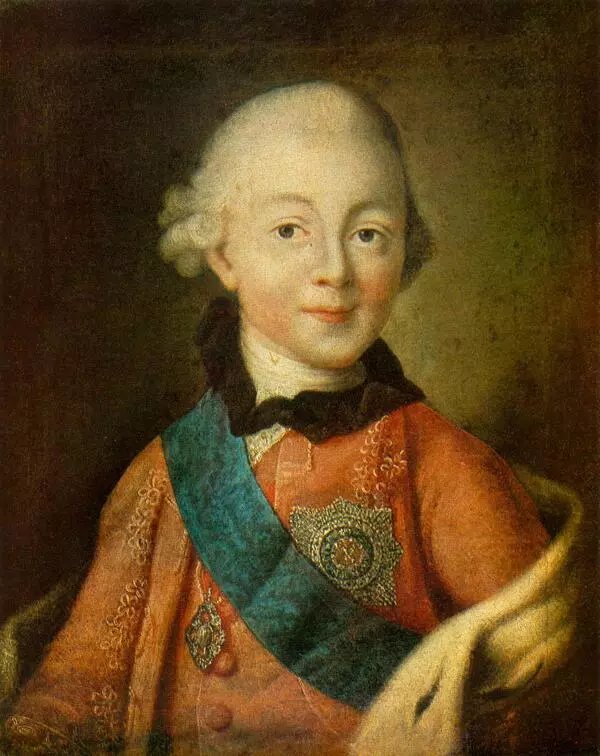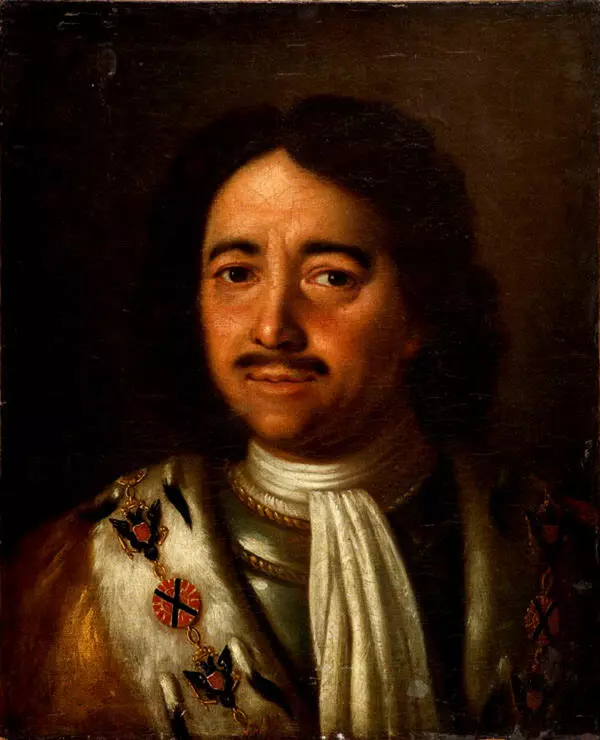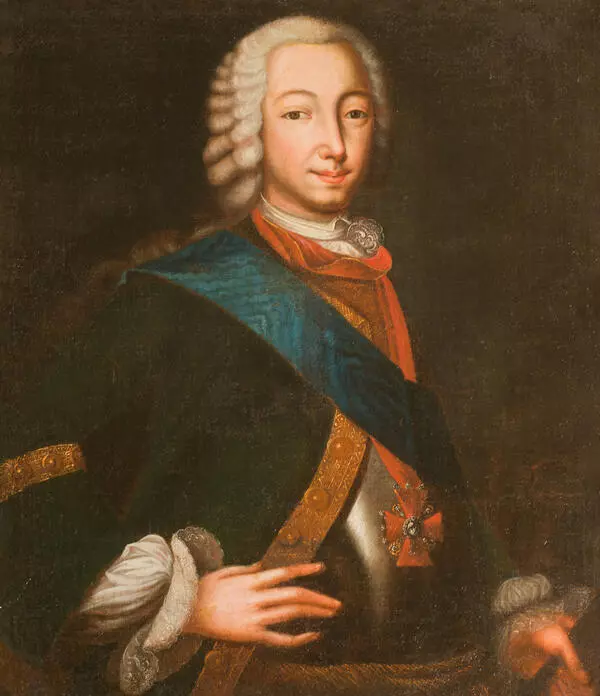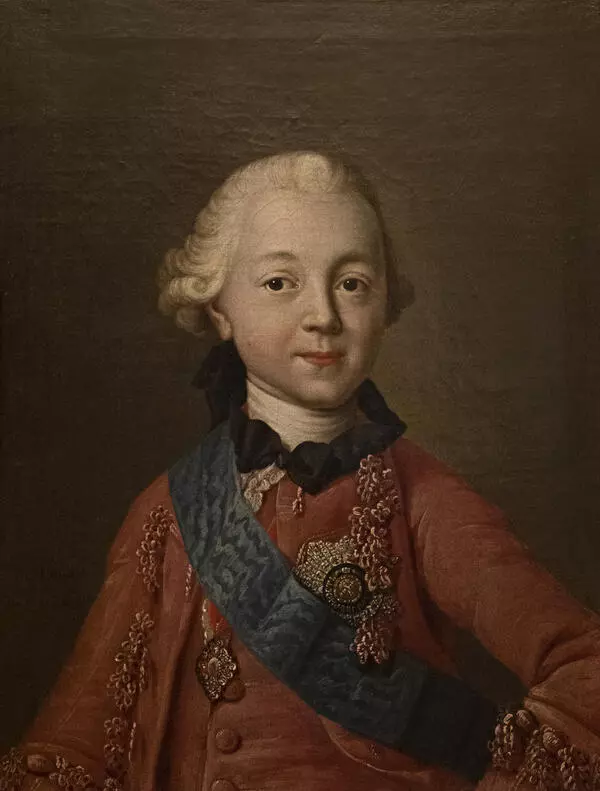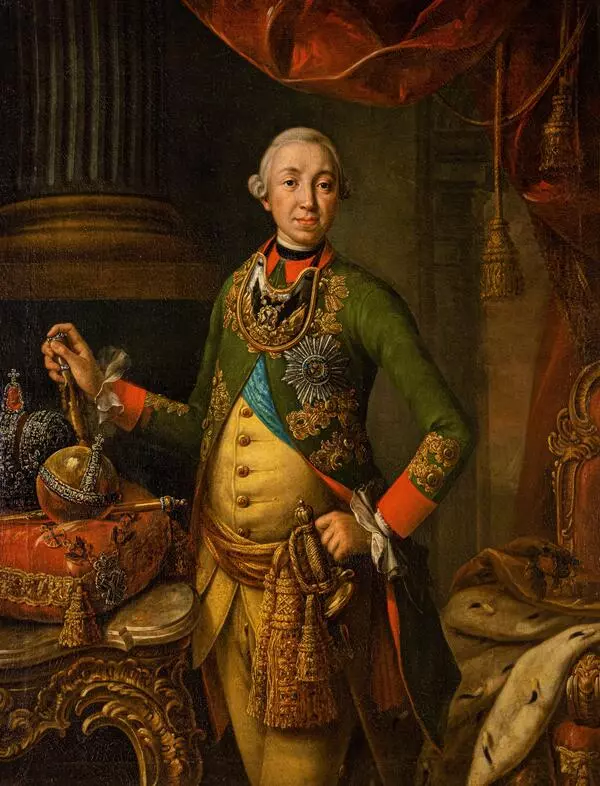Portrait is a genre of fine art that appeared in Russia in the second half of the 17th century. In the 18th century, Russian artists began to paint both ceremonial portraits, in which the characters were most often presented in a solemn atmosphere, and chamber — small, lyrical works. The commissioners of the paintings were primarily members of the imperial family and the highest Russian aristocracy, and later the portraits became common in noble and merchant circles.
In the Trinity Lavra of St. Sergius there was a small gallery made up of portraits of emperors and Lavra archimandrites. The paintings were located in the reception halls of the Royal Palaces, the abbot’s and vice-rector’s chambers. In the middle of the 18th century, the collection of works included three portraits of Empress Elizaveta Petrovna, her nephew and heir the Grand Duke Peter Fedorovich, as well as his wife Grand Duchess Ekaterina Alekseevna. The canvases were created in the workshops of the best painters of Moscow and St. Petersburg.
The portrait of Empress Elizaveta Petrovna was commissioned to the artist Alexey Antropov by the Holy Synod, the highest ruling body in the Russian Orthodox Church, in the late 40s of the 18th century. Antropov created a copy of a full-length coronation portrait by the painter of the court of St. Petersburg Louis Karavak. In those years, copying the “official” portrait was common practice. The artist depicted the Empress in full dress with a complete duplication of the imperial attributes.
Antropov was faced with the task of conveying the general features of similarity, emphasizing the imperial grandeur of the person: the solemn image of the empress was supposed to inspire the viewer with reverence.
Using the rich palette, the artist conveyed an atmosphere of solemnity. He exquisitely painted the texture of materials: brocade, velvet, ermine fur; emphasized the brilliance of diamonds and gold. Antropov was primarily an icon painter, he worked a lot on commissions of the Trinity Lavra of St. Sergius. Researchers suggest that this is why he tended to paint bright decorative works, which is characteristic of the church art of Moscow during the Baroque period of the middle of the 18th century.
In the Trinity Lavra of St. Sergius there was a small gallery made up of portraits of emperors and Lavra archimandrites. The paintings were located in the reception halls of the Royal Palaces, the abbot’s and vice-rector’s chambers. In the middle of the 18th century, the collection of works included three portraits of Empress Elizaveta Petrovna, her nephew and heir the Grand Duke Peter Fedorovich, as well as his wife Grand Duchess Ekaterina Alekseevna. The canvases were created in the workshops of the best painters of Moscow and St. Petersburg.
The portrait of Empress Elizaveta Petrovna was commissioned to the artist Alexey Antropov by the Holy Synod, the highest ruling body in the Russian Orthodox Church, in the late 40s of the 18th century. Antropov created a copy of a full-length coronation portrait by the painter of the court of St. Petersburg Louis Karavak. In those years, copying the “official” portrait was common practice. The artist depicted the Empress in full dress with a complete duplication of the imperial attributes.
Antropov was faced with the task of conveying the general features of similarity, emphasizing the imperial grandeur of the person: the solemn image of the empress was supposed to inspire the viewer with reverence.
Using the rich palette, the artist conveyed an atmosphere of solemnity. He exquisitely painted the texture of materials: brocade, velvet, ermine fur; emphasized the brilliance of diamonds and gold. Antropov was primarily an icon painter, he worked a lot on commissions of the Trinity Lavra of St. Sergius. Researchers suggest that this is why he tended to paint bright decorative works, which is characteristic of the church art of Moscow during the Baroque period of the middle of the 18th century.


